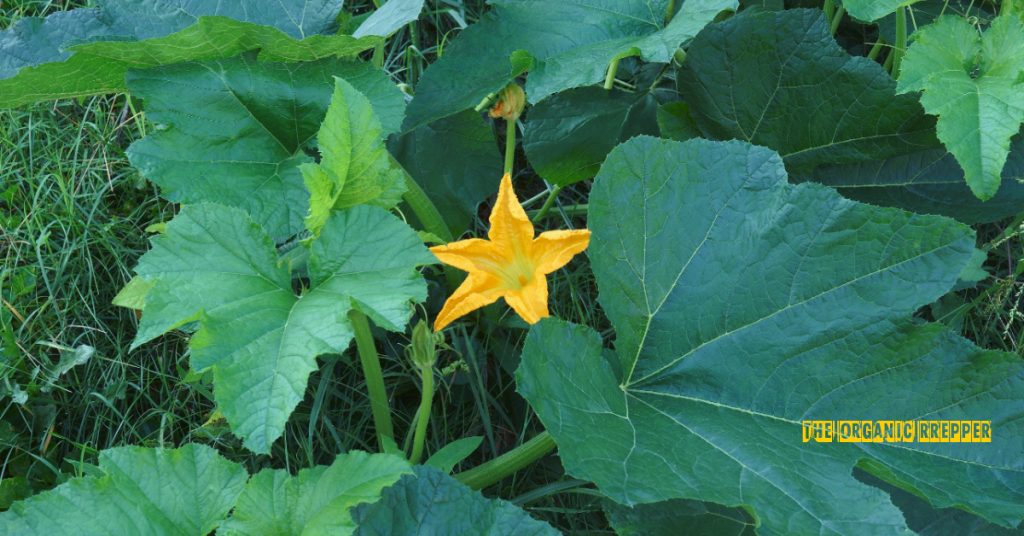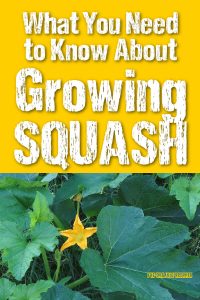If you're new here, you may want to subscribe to my RSS feed. Thanks for visiting!
If you’re hanging out on this board, chances are you’ve noticed the events of the past few years. Shortages and inflation are hitting everyone hard and interest in gardening is exploding. Many have decided to grow their own food, even if only a little, with the idea that anything they put into their mouths that weren’t purchased can only help.
Good! But what do we grow, and how? I’ve written about starting from seed here and when to plant your seedlings outdoors or not here. Most recently, last week, I wrote about growing tomatoes, in this article, I’ll discuss growing squash, a very versatile and high-calorie vegetable.
What are the different types?
Squashes come in summer and winter varieties. Summer varieties include zucchini, golden/summer squash, and patty pan/scallop. They come in many colors as well as straight neck and crook neck forms. These tend to be short maturing varieties, often maturing in 60-70 days versus the winter squashes that take 100+ days to mature. For a great list of varieties along with their history go here.
Winter varieties include butternut, acorn, delicata, spaghetti, and many more. As an aside, pumpkin from a botanical standpoint is a gourd, not a squash, but it’s included in many squash lists even so. For a great list of winter varieties with pictures, go here. Neither list is all-inclusive. I for one am trying Hopi pale gray squash this year, a Southwestern winter variety whose seeds are very hard to find. If it works out I’ll include the seeds in both my annual swap and gift to my local seed library.
How do I grow my squash?
Selection is, as with other vegetables, dependent upon both growing season and intended use. I find it best to start my plants indoors since my growing season is if I’m lucky, late May-October. Squashes are frost-sensitive plants, meaning that even a light frost in the 30s F/0 C will kill them.
While some gardeners with longer growing seasons may be able to direct sow these, those with shorter seasons will likely have to either start them indoors or acquire transplants locally in order to reap a good harvest. You can find more dirt on growing and agricultural locations in the Home Agriculture Comprehensive course here.
As for where to grow them, I’ve had more success growing in the ground than in containers. Most vegetables are heavy feeders and squash are no exception. Most container mixes contain only NPK and none of the secondary or micronutrients. Also, squash is a huge vining plant. The vines run everywhere. They can be pruned at 15 feet or so but still, that’s a long way!
Therefore, I’ve had better luck letting them run on the ground than trying to corral them on my deck in containers. Give them room to breathe and fertilize every month with a fertilizer that contains both NPK and secondary nutrients such as sulfur (S), calcium (Ca), and magnesium (Mg.) An iron (Fe) supplement will only help, as both Fe and Mg are required to build chlorophyll, the necessary structure for photosynthesis. They can also be staked, which will improve airflow and lengthen plant life. For more about properly staking them go here.
What could go wrong when growing squash?
Squashes being cucurbits, they’re almost a written invitation for powdery mildew. Even if the soil is well-mineralized and the plants strong, it seems to happen to me every year. Powdery mildew is a fungus that affects the leaves and once you see it, you’ll never forget. It can be slowed down by using copper fungicide but it will eventually kill the plant. It’s basically a race to get what you can from the plant before the plant dies. Good airflow via proper spacing will help. You can try neem oil if you catch the infection early enough but honestly, I’ve had little success with this.
Another huge squash pathogen is the squash vine borer, a bug that lays its eggs at the base of the plant. The larvae then burrow inside of the hollow stem, eating as they go and destroying the plant. This can be managed by planting as early as possible to avoid the active season. For a more detailed discussion of this go here.
Squash vines are dioecious, meaning that there are both male and female flowers on the same vine. Unlike cucumbers, the flowers are huge. To tell the difference, look underneath the flower. The female has an undeveloped fruit. She’ll also have a receiving form in the flower, whereas the male flower with the pollen on the anthers looks like something that dangles, only in plant form.
If you’re feeling adventurous, squash flowers can be hand pollinated. Use a small paintbrush to take pollen from the male anther and twirl it into the female stigma. Be sure to put as much pollen as possible into the stigma because an under-pollinated flower will abort its fruit. Texas A&M gives a nice pictorial of the hand pollination process here. More information on the most common diseases of squash can be found here.
What do I do with all of it?
Growing squash is only step one. As for use, of course, they’re for eating! But how, and how to preserve them over the winter? Summer squashes such as zucchini make great pickles and are quite yummy stir-fried with butter and a bit of garlic. Golden and patty pan squashes are also great stir-fried and make a wonderful relish! Many recipes are available online as well as in the Ball Blue Book, or you can check out Daisy’s list of books on preserving foods. Here’s an article on using zucchini.
Canning squash isn’t considered safe unless in one of these forms. Freezing it works very well. Squash for freezing is cooked, then cut up and bagged as soon as it can be safely handled. I find it useful to label my bags beforehand with variety and dates. I also find that winter varieties lend themselves better to freezing than summer varieties do, which tend to get mushy upon thawing. I freeze my zucchini as bread. Another way to put up winter squash is to wipe the outside with vinegar, pat it dry, and rub in some olive oil. Then store them on a shelf in the pantry or your kitchen.
Last year I had 13 winter squashes to preserve, and I don’t like the idea of a power outage ruining all of my frozen food. By cleaning and rubbing with olive oil, my squashes stayed good through the winter. I finally gave the last 4 away because food fatigue is a Thing and I couldn’t bear the idea of eating squash at that point! Keep that in mind while building your pantry.
Have you tried growing squash?
I covered the basics of growing one of the most nutritious and high-calorie vegetables that are very versatile in cooking and easy to preserve!
Have you given growing squash a try? How do you grow yours? Has anything gone wrong with it? What happened? What varieties do you plant, and how do you preserve your harvest? Let’s discuss it in the comments!
About Amy Allen
Amy Allen is a professional bookworm and student of Life, the Universe, and Everything. She’s also a Master Gardener with a BS in biology and has been growing food on her small urban lot since 2010.

















11 Responses
I have been growing squash for ever. Usually three or 4 kinds 6 or 8 plants each in order to supply the farm stand too. I found romanesco to be the most hearty and least susceptible to powdery mildew.
I grate a bunch of the squash and put it in baked goods. Also can’t make enough latkes, everyone hogs them down.
I might give romanesco a try one year! Since I’m not supplying a farm stand I have a total of 7 plants this year, some winter and some summer. I’ll also get some from my CSA share so that will be plenty. Thanks for the comment!
We had so much squash last year that we are still eating butternut and acorn. We also had a BUNCH of yellow squash, so my husband made up a casserole recipe that we could freeze. We just ate the last casserole of a dozen from last year’s crop. And we have a relatively small garden.
Two years ago, we had put squash seeds, rinds, etc., into the compost pile, and we had squash that grew there last year. We called it “mystery squash.” We have had way too much fun with that. Ha ha
Whatever works, right? Good for you and thanks for the comment!
Ooooo….Teresa, can you share that casserole recipe?? Pretty please…?
We live in Zone 5, and most squash varieties do well here. Our zucchini goes absolutely bonkers and we get a humongous surplus of zukes, enough that we use them to supplement the chickens during the winter months.
I’m in zone 5 also and zukes do go bonkers! I had more of them last year than any other squash. Zuke bread, zuke pickles, zuke stir-fry-you name it! Good stuff except for the food fatigue LOL
Yes I feed squash to the chickens too. I grate any of the ones that get too big, sun dry them and bag them up for winter feeding.
This year we’ve erected an arch trellis for our squash inspired by an IG channel called EncyGROWpedia. Check him out.
Another family fav is I make a puree of yellow squash with butter, s&p, and a little broth or miso. This great hot or cold. Kids dig it.
I have grown butternut squash and trained it to vine on the short rabbit fence I have around my garden. It works well and keeps them off the ground.